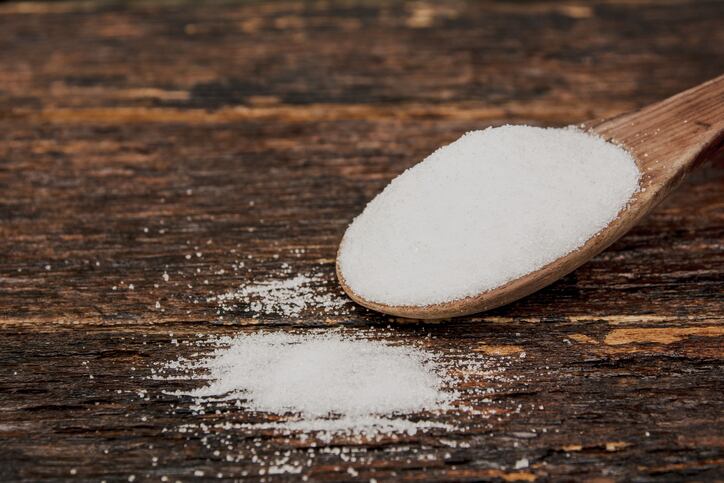With the ongoing obesity crisis, pressure continues to mount for the food and beverage sector to reduce the amount of sugar contained in their products. Numerous countries have introduced taxes on high sugar foods and regulators around Europe have introduced voluntary sugar reduction targets.
Consumers, enabled by nutritional labelling initiatives such as NutriScore and traffic light labelling, are increasingly searching out low sugar products.
Guilt-free indulgence
According to research from ingredients supplier BENEO , the main motivation for consumers to reduce their sugar intake is its negative effects on their health, with 58% of respondents wanting to eat less sugar saying weight management is their biggest driver.
Mintel data suggests that one-third of UK consumers feel guilty about snacking, with half of German consumers and nearly two thirds of consumers in Spain, Poland and France agreeing that there aren’t enough healthy sweets available.
But this doesn't mean people are willing to forego indulgent products.
“More and more consumers are searching for guilt-free indulgence,” BENEO marketing director Thomas Schmidt observed. “Consumers want a better nutritional profile, but they still don’t want to make sacrifices when it comes to the overall indulgent experience conveyed by a good texture and great taste.”
Working to develop food that is both healthy and indulgent is an important commercial opportunity for food makers. But it is also a difficult one to deliver against.
“The limited success of sugar reduction in some categories, such as biscuits and puddings, shows the challenges faced in product reformulation,” Schmidt told FoodNavigator. “As sugar is crucial for taste, texture and mouthfeel, there are a range of technical and sensorial challenges that must be resolved to effectively reduce sugar and meet high consumer expectations at the same time.”
Samuel Russell, EMEA marketing manager at Univar Solutions, also highlights that the intersection between indulgence and health is a big opportunity. “With consumers, taste continues to be the key influencer on food and beverage purchasing decisions… In what we call ‘permissible indulgence’, today’s consumers demand all of the taste and nutrition factors they desire without any compromise.”
Functional formulations a healthy opportunity
Schmidt believes that ingredients that deliver sweetness while also boosting the functional or health properties of a product present an interesting innovation route for food formulators. He points to the use of chicory root fibres, which have prebiotic benefits and help “bridge the fibre gap” while also reducing sugar.
Israeli start-up Unavoo Foods is also using fibre to replace sugar. The company uses a unique blend of stevia and dietary fibre to hit a healthy, natural sweet spot with its HEYLO brand. Containing more than 90% soluble dietary fibre, the company claims HEYLO is positive for digestive health and slows the absorption of sugars.
Elsewhere, Schmidt says oligofructose – suitable for use in yoghurt - has a “mild sweetness” and “contributes to mouthfeel, body and fruit flavour in a similar way to sugar”, while increasing fibre content.
Likewise, Univar’s Russell, highlights the potential of reformulation to improve digestive function - as well as other deliverables such as clean label, natural or organic claims. “At Univar Solutions we’ve seen successes with erythritol and stevia blends, mainly due to the ‘naturally occurring’ state of both these products, but also the reduced laxative effect it has as a result of erythritol’s high digestive tolerance,” he told FoodNavigator.
“What really excites us at Univar Solutions in terms of sugar reduction is the increasing ability to ‘blend the trends’ – we’re seeing so many ingredients coming through that not only serve to replace sugar in a recipe but can also add previously unreachable functional and processing benefits such as clean label, organic, fibre-enriched, natural and easy to use.”
Less of a sweet tooth?
Dominique Delfaud, marketing, sensory and consumer research manager at flavours house Mane, believes that the backlash against sugar has also led to consumers seeking out more sophisticated flavour profiles. This gives food makers an opportunity to look beyond sweetness as they work to cut sugar.
“Consumers are more than ever ready to reduce the sweetness intensity of their products as they are increasingly concerned by the levels of sugar that they ingest. This is a shift compared to a few years ago, when most of them were not ready to compromise on the overall sweetness intensity.
“Nevertheless, they still expect a flavourful and authentic sensory experience with less sugar, without the off-notes of the high intensity sweeteners. We will see more and more new product launches going in this direction in the years to come. The know-how of the flavourist is and will be key to ensure a pleasant and rich sensory experience in terms of quality profile, intensity, timing and mouthfeel while reducing or zero sugar at the same time.”
Mane VP of strategic development, Luis Angel Fernandez, said that a range of ingredients can be used to reduce sugar while balancing the overall sensory profile.
“Depending on the food matrix we might need to replace the volume of sugar with an alternative (polyols, fibres, proteins, rare sugars). Depending on the level of sugar to be replaced we might need to use high intensity sweeteners – natural or artificial,” he explained.
The French flavours house then uses natural flavours to mask bitterness, metallic, astringency or other off notes coming from the high intensity sweetener or the bulking agent, while enhancing the sweet taste intensity, temporal profile and palatability.
Fernandez told FoodNavigator that this is an exciting area of product development for Mane. “We keep investigating natural flavouring raw materials able to modulate the taste and provide optimised sensory experience in zero sugar or sugar reduced food or beverages. These natural flavours are customised to fit with different food matrixes containing sugar replacers, high intensity sweeteners and bulking agents.
“The discovery of these natural flavour taste modulators is endless and gives great opportunities to deliver unique solutions in this highly demanding sector.”
A decreasing demand for simple 'sweet' flavours is a trend also cited by Givaudan beverages product manager Nely Vlasblom.
"We are also seeing changes in consumer tastes driven by natural and clean label considerations, alongside health and wellness. There is a growing trend among some consumers towards lighter, more refreshing and less sweet taste preferences.
"For these consumers, who are looking for less sweet taste experiences, simply replacing sweetness is not the right solution and Givaudan has recently launched a new approach to sugar reduction that delivers fully satisfying, less sweet products without added sweeteners."
Working with Michelin-starred chefs via our Chefs Council, Givaudan has developed an approach that it calls 'beyond sweetness'.
"We have been able to identify non-typical natural ingredients and food techniques that created more complex, full bodied or impactful tastes," Vlasblom explained. "The approach combines the use of a new proprietary sensory language, novel ingredients, and deep understanding of sweetness and satisfaction to deliver up to 50% sugar reduction without using artificial sweeteners or stevia."




